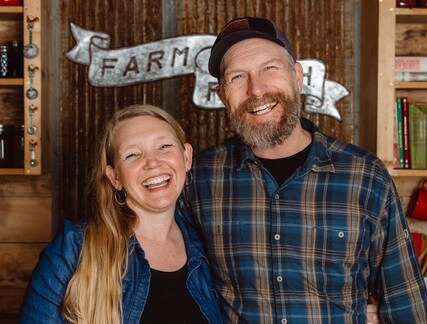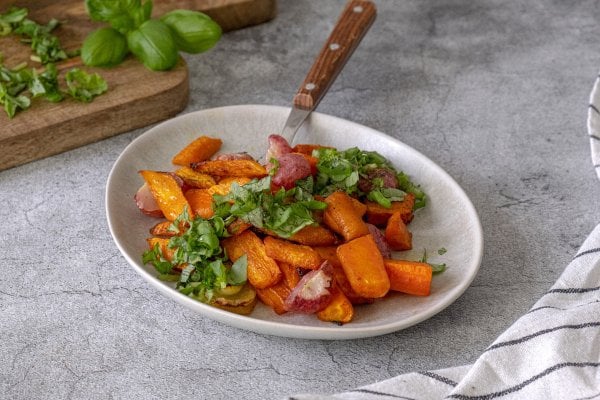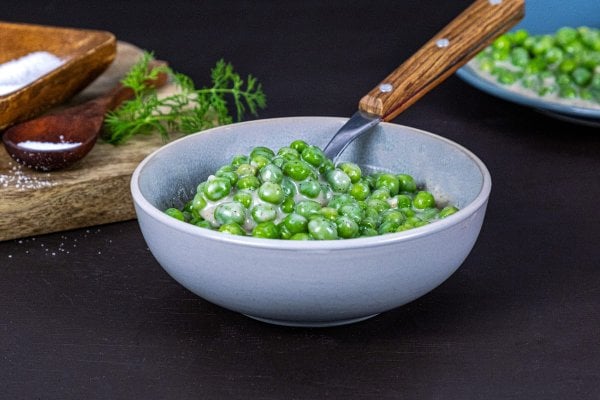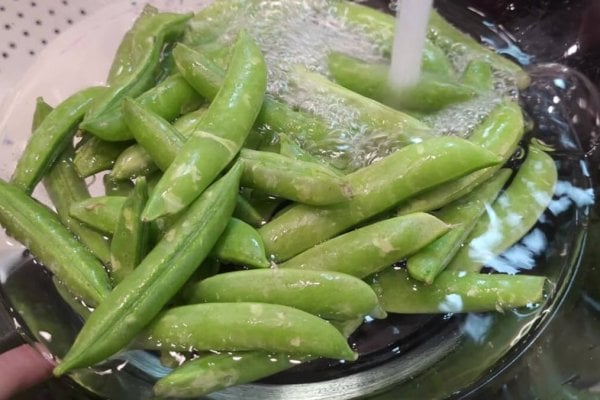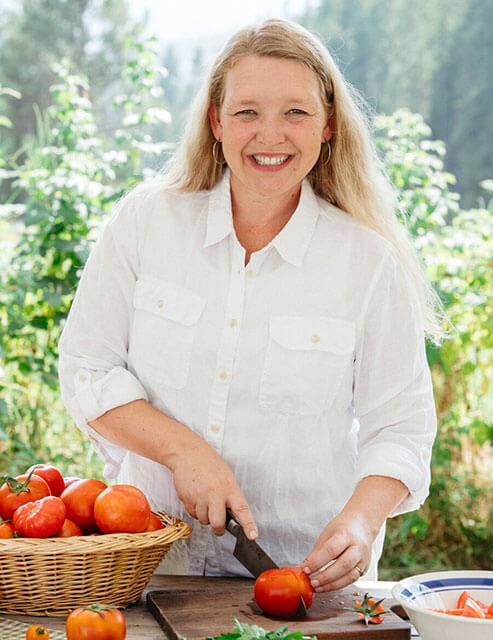Did you find a great sale on root vegetables or have a bumper crop this year? This roasted fall vegetables recipe is the best way to use them.

Complementary to just about any dish (chicken, pork, beef, pasta, you name it!), just choose your vegetable medley, mix it with the right oils and seasonings, pop them in the oven, and enjoy the caramelized deliciousness!
Table of Contents
ToggleWhy I Love Roasted Fall Vegetables
In the summer, our side dishes tend to follow the garden harvest with fresh choices like green bean salad, broccoli salad, harvest pear salad, roasted radishes and carrots or cowboy caviar.
When wintertime on the homestead sets in, we move from the garden to our pantry, where our seasonal meal planning focuses more on heartier sides, such as potato peel pie, Tennessee onions, creamy corn pudding, and creamed onions.
This recipe for roasted fall vegetables often signals the change in seasons as the fall harvest begins to wind down and we settle in for the winter months.
Around the time the best beets are available in your fall garden (or the farmer’s market), many other delicious fall vegetables are popping up as well. I believe it’s no mistake that God designed all these perfectly complementary crops to ripen at the same time.
If you don’t happen to have the vegetables listed in this recipe, you can mix and match others to fill in the gaps. Use more or less of the vegetables listed, or try some of the following: white or red potatoes, butternut squash, pumpkin, rutabaga, radishes or Brussels sprouts.

Tips for the Best Roasted Fall Vegetables
If you’ve tried autumn-roasted vegetables before and felt a bit underwhelmed, it could be that you missed some important tips. Follow these simple guidelines to make the perfect side dish.
- Quality Is Key – Don’t try to revive sad-looking and improperly stored vegetables. Always choose fresh, seasonal fall vegetables for the best flavor and texture.
- Clean Vegetables – Wash the vegetables thoroughly to remove any dirt or debris.
- Uniform Pieces – Peel and cut the vegetables into uniform sizes so that you don’t end up with some pieces under or overcooked.
- Properly Season – Many recipes suggest drizzling vegetables with oil before roasting. For best results, use a mixing bowl to toss the vegetables with avocado or olive oil, salt, and your favorite herbs and spices before arranging them on your roasting pan.
- Single Layer – Make sure your pan is large enough to arrange your vegetables in a single layer. If they are crowded or piled on top of each other, they will technically bake instead of roast, yielding an undesirable texture.

What to Serve With Roasted Fall Vegetables
Roasting root vegetables brings out their sweetness, providing a good balance for savory dishes. Here are some of our favorite main dishes that go well with roasted veggies.
- Creamy Leek Pasta
- Roasted Garlic Chicken
- Roasted Chicken With Lemon Reduction Sauce
- Roast Goose
- Spatchcock Turkey
- Slow Cooker BBQ Pulled Pork
- Easy Meatloaf

The Homestead Kitchen
This recipe for roasted fall vegetables was featured in issue No. 38 of the Homestead Kitchen magazine. If you are ready to master your homestead kitchen, this affordable magazine was curated with you in mind.
It’s packed full of cream-of-the-crop homesteading information, including recipes, DIY instructions, inspirational stories, homesteading hacks, book reviews, gardening tips, kids’ projects and more. We can’t wait to share it with you!
If you want to spend less time striving in the kitchen and more time enjoying it, then subscribe today to have your monthly copy delivered right to your mailbox.

How to Make Roasted Fall Vegetables
Supplies Needed
- Mixing Bowl – Do not be tempted to skip coating your vegetables with oil and spices in a separate mixing bowl. This technique truly makes all the difference!
- Measuring Cups and Spoons – You can probably get away with eyeballing this recipe, but accurate measurements will provide the best results.
- Baking Sheets – Sheet pan-sized baking sheets work best for this recipe. Lining your baking sheets with parchment paper will make for easy clean up.
- Cutting Board and Sharp Knife – Learn how to naturally sanitize your cutting boards, and always practice knife sharpening basics to keep your tools in good working order.

Ingredients Needed
- Beets – Red or golden beets work interchangeably. Peel and chop beets into 1” cubes.
- Turnip – Wash and chop the turnip into 1” cubes.
- Sweet Potato – White, orange, or purple sweet potatoes can be used. Peel and chop it into 1” cubes.
- Carrots – Use any variety of carrots (or a mix!) Scrub or peel and cut into 1” cubes. Learn how to grow carrots here.
- Onion – Red or yellow onions are ideal. Peel and dice. Learn how to grow onions from seed here.
- Garlic – Do not mince or chop the garlic; just peel and leave the cloves whole. If you don’t have fresh garlic, you can substitute 1 ½ tsp dried garlic powder and add it with the salt and pepper. Learn how to grow garlic here.
- Avocado Oil – If you don’t have avocado oil on hand, you can use olive oil for the roasted veggies or choose another oil that has a high smoke point.
- Salt – Redmond Real Salt is our go-to both for our household and our farm animals. Homesteading Hack: Using that link for Redmond Salt will automatically give you 15% off your order!
- Black Pepper – Freshly ground is preferred, but if you don’t have any on hand, just use ground black pepper.
- Fresh Sage – Roughly chop the sage. If you don’t have fresh, you can substitute 1 tsp dried. Learn how to grow sage here.
- Fresh Rosemary – Roughly chop the rosemary. If you don’t have fresh, you can substitute 1 tsp dried. Learn how to grow rosemary here.





Step-by-Step Directions
- Preheat your oven to 425°F and line two baking sheets with parchment paper.
- After chopping all the vegetables, place them in a large bowl with the garlic and drizzle with avocado oil. Toss to coat the vegetables in oil, then add salt and black pepper. Stir again to evenly distribute the seasoning.
- Spread the oiled and seasoned vegetables in a single layer evenly over the two lined baking sheets. Bake the two trays for 30 minutes, rotating at the halfway point.
- After 30 minutes, remove the trays from the oven and evenly sprinkle the chopped herbs over all the vegetables. Stir around or toss vegetables on the baking sheet, then return to an even layer.
- Return the baking sheets to the oven for 15-20 minutes until vegetables are fork-tender and caramelized. Serve roasted vegetables warm with your favorite main dish.
Did you try this recipe for roasted fall vegetables? If so, please leave a star ⭐ rating and your comments in the recipe card below. Then snap a photo and tag us on social media @homesteadingfamily so we can see!

Storing and Reheating Tips
If you have leftovers you want to keep fresh for later, allow them to cool completely and store them in airtight containers in the fridge for 3-5 days or the freezer for up to 3-6 months.
When you’re ready to reheat them, just microwave or oven-heat them at 350°F until they reach an internal temperature of 165°F (74°C) to ensure food safety.
FAQ
Popular fall vegetables include sweet potatoes, carrots, Brussels sprouts, turnips, parsnips, butternut and other winter squash and kale.
Choose the right vegetables and cut them evenly. Season them well. Use baking sheets and an oven at 425°F for the best results.
Clean, peel, and cut them into uniform pieces. This ensures even cooking and prevents burning.
If it’s harvested in the fall, they will likely go together. Experiment with whatever you have on hand to find the combination you like best.
Overcrowding and undercooking are common issues. Make sure to leave space between vegetables and watch the oil’s smoke point.
Roasted fall vegetables are great with poultry, pasta, beef, lamb, wild game, fish and pork dishes.
Fall is best for roasting, but other seasons offer unique vegetables. Spring has asparagus and bell peppers. Summer is great for zucchini and eggplant. Winter is perfect for carrots and parsnips.
Refrigerate or freeze them for storage. Refrigeration is good for short-term, while freezing is for longer. Always follow food safety guidelines when storing and reheating.
Other Posts You May Enjoy
- Creamy Corn Pudding: A Southern Comfort Classic
- Traditional Potato Peel Pie Recipe
- Creamed Chipped Beef Recipe: A Comfort Food Classic
- Harvest Pear Salad
- Easy Cowboy Caviar Recipe – Simple & Delicious Appetizer
- Green Bean Salad – Refreshing and Delicious Summer Dish
- Easy Healthy Broccoli Salad Recipe

Roasted Fall Vegetables
Equipment
- Cutting Board and Knife
- Mixing Bowl
- measuring cups and spoons
- 2 Baking Sheets
Ingredients
- 2 large beets
- 1 large turnip
- 1 large sweet potato
- 4 carrots
- 1 onion
- 6 cloves garlic
- 1/4 cup avocado oil
- 2 teaspoons salt
- 1/2 teaspoon black pepper
- 1 Tablespoon fresh sage
- 1 Tablespoon fresh rosemary
Instructions
- Preheat your oven to 425°F and line two baking sheets with parchment paper.
- After chopping all the vegetables, place them in a large bowl with the garlic and drizzle with avocado oil. Toss to coat the vegetables in oil, then add salt and black pepper. Stir again to evenly distribute the seasoning.
- Spread the oiled and seasoned vegetables in a single layer evenly over the two lined baking sheets. Bake the two trays for 30 minutes, rotating at the halfway point.
- After 30 minutes, remove the trays from the oven and evenly sprinkle the chopped herbs over all the vegetables. Stir around or toss vegetables on the baking sheet, then return to an even layer.
- Return the baking sheets to the oven for 15-20 minutes until vegetables are fork-tender and caramelized.
- Serve roasted vegetables warm with your favorite main dish.
Notes
- Quality Is Key – Don’t try to revive sad-looking and improperly stored vegetables. Always choose fresh, seasonal fall vegetables for the best flavor and texture.
- Clean Vegetables – Wash the vegetables thoroughly to remove any dirt or debris.
- Uniform Pieces – Peel and cut the vegetables into uniform sizes so that you don’t end up with some pieces under or overcooked.
- Properly Season – Many recipes suggest drizzling vegetables with oil before roasting. For best results, use a mixing bowl to toss the vegetables with avocado or olive oil, salt, and your favorite herbs and spices before arranging them on your roasting pan.
- Single Layer – Make sure your pan is large enough to arrange your vegetables in a single layer. If they are crowded or piled on top of each other, they will technically bake instead of roast, yielding an undesirable texture.

